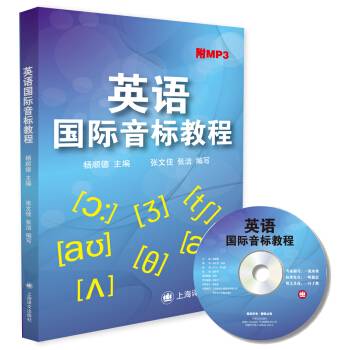

具体描述
产品特色
编辑推荐
《新托福考试专项进阶》系列丛书引进自韩国多乐园出版社。该社成立于1977年,在韩国英语教育出版领域始终处于领军地位。本丛书被韩国众多学校和培训机构指定为课堂教材,在托福考生中享有较高声誉。
本系列丛书从托福考试所考查的听、说、读、写四项技能入手,为考生提供详尽的考试指导,并将各技能分为初、中、高三级,通过独特的 “进阶训练”方式,再辅以大量练习,帮助考生逐步掌握托福实考的技巧,同时切实提高英语实际运用能力,从而在短期内轻松取得托福高分。本丛书内容编排由易到难,循序渐进,实战性强,是不可多得的托福备考资料。
内容简介
《新东方托福考试培训教材:托福考试备考策略与模拟试题》是一本适用于中、高级英语水平的读者备考托福考试的综合技能强化教程。书中内容超出了应试需求,不仅能帮助托福考生做好考前准备,同时又侧重于英语语言技能的全方位提高,为考生顺利完成学业进行必要的语言训练。书中包含35个语言技能训练单元和1200多道模拟试题,题目难度与真题高度相仿,是托福备考的必备教材,也可作为提高阅读、听力、口语和写作技能的参考书。作者简介
Nancy Gallagher,美国资深教育专家,有20余年英语教学与教材编写经验,著有《托福考试备考策略与模拟试题》、《新托福考试冲刺试题》、《新托福考试核心语法》等畅销备考书籍,深受托福考生欢迎。内页插图
目录
INTRODUCTIONThe TOEFL iBT?
The Test Score
How to Use This Book
Sample Cou e Outlines
PART 1 – READING
Reading Passages and Questio
Strategies for the Reading Section
11 Unde tanding Facts and Details
12 Identifying Negative Facts
Quiz
Quiz
13 Unde tanding Vocabulary in Context
Quiz
Quiz
14 Making Inferences
15 Determining Purpose
Quiz
Quiz
16 Recognizing Paraphrases
17 Recognizing Coherence
Quiz
Quiz
18 Summarizing Important Ideas
19 Organizing Information
Quiz
Quiz
PART 2 – LISTENING
Conve atio and Questio
Lectures and Questio
Strategies for the Listening Section
21 Identifying the Topic and Main Idea
22 Listening for Details
Quiz
23 Determining Attitude and Purpose
Quiz
Quiz
24 Making Inferences and Predictio
Quiz
Quiz
25 Unde tanding Function
26 Listening for Organization
Quiz
Quiz
Quiz
PART 3 – SPEAKING
Independent Speaking Tasks
Integrated Speaking Tasks
Strategies for the Speaking Section
31 Independent Speaking: Developing a Topic
32 Independent Speaking: Stating and Supporting a Position
33 Independent Speaking: Clarity and Coherence
34 Evaluating Independent Speaking
Quiz
Quiz
Quiz
35 Integrated Speaking: Connecting Information
36 Integrated Speaking: Taking Notes
37 Integrated Speaking: Delivering Your Respo e
38 Integrated Speaking: Summarizing a Problem
39 Integrated Speaking: Summarizing Information
310 Evaluating Integrated Speaking
Quiz
Quiz
Quiz
Quiz
Quiz
PART 4 – WRITING
The Integrated Writing Task
The Independent Writing Task
Strategies for the Writing Section
41 Integrated Writing: Connecting Information
42 Integrated Writing: Taking and Using Notes
43 Integrated Writing: Developing Your Respo e
44 Integrated Writing: Sentence Structure
45 Evaluating Integrated Writing
Quiz
Quiz
Quiz
46 Independent Writing: Prewriting
47 Independent Writing: Stating and Supporting an Opinion
48 Independent Writing: Unity and Coherence
49 Independent Writing: Sentence Variety and Word Choice
410 Evaluating the Essay
Quiz
Quiz
Quiz
Quiz
Quiz
TEST
TEST
TEST
TEST
ANSWER KEY
AUDIO SCRIPTS
INDEX
PROGRESS CHARTS
精彩书摘
QUESTIONS 7-10 1 Long ago, people looked up in the sky and noticed groups of stars that looked like pictures. These patterns of stars, constellations, have been part of human culture for thousands of years. Ancient Syrians and Babylonians named many constellations and created stories about them. The Greeks and Romans later adopted these constellations and translated their names and stories into their own language. After the decline of these ancient cultures, most knowledge of constellations remained hidden in private libraries. Beginning in the eighth century, scholars rediscovered this knowledge. The study of astronomy spread quickly throughout the Mediterranean world, becoming part of university study. Astronomers identified many constellations only a few centuries ago. When Western astronomers started traveling to South Africa in the seventeenth century, they found numerous brilliant stars in the Southern sky. They named some of these Southern constellations after the scientific inventions of the time, such as the Microscope and the Air Pump. 2 Today's astronomers view constellations simply as areas of the sky where interesting objects await observation and study. The entire sky is divided into 88 such regions. In the 1920s, the International Astronomical Union established the boundaries of these regions. In each region, astronomers give Greek letters to a constellation's brighter stars, usually in order of brightness. Hence, the "alpha star" is the brightest star of that constellation. Scientists and ordinary people still refer to many constellations by their popular names, for example, the Lion, the Hunter, and the Great Bear. 7.Which of the following can be inferred from paragraph 1? A Constellations have interested people for very long time. B People once believed incorrect stories about constellations. C Ancient cultures disagreed about the shapes of constellations. D Most knowledge of constellations has been lost forever. 8. It can be inferred from paragraph 1 that the ancient Greeks and Romans A were the first people to notice patterns of stars in the sky B built universities all over the Mediterranear region C hid knowledge of constellations in private libraries D acquired knowledge of constellations from earlier cultures 9. It can be inferred from paragraph 2 that A there are no constellations in some areas of the sky B scientists today continue to study constellations C the boundaries of the constellations change every year D the International Astrononucal Union no longer exists 10. According to paragraph 2, which of the following statements is most likely true? A Future scientists will divide the sky into fewer regions. B There are no more constellations for scientists to discover. C A constellation's alpha star is the one that is easiest to see. D Few people know the traditional names of constellations. ……前言/序言
用户评价
坦白说,我是一个对时间要求极高的职场人士,每次打开一本新的备考资料,最怕的就是那种充斥着大量水分和过时信息的冗余内容。然而,这套资料的编撰者显然深谙“少即是多”的真谛。它在核心词汇的筛选上极其精准,完全聚焦于托福阅读和听力中反复出现的高频学术词汇,而不是堆砌那些在日常交流中很少用到的冷僻词汇,这极大地减轻了我的记忆负担。更有价值的是,它对听力材料的难度分级处理得非常精妙。它不是简单地把听力材料分成初级、中级、高级,而是根据不同学科(比如艺术史、生物学、社会学)的专业术语密度和语速变化进行细致的划分。我发现,当我在做那些“自然科学”主题的练习时,教材会特别提醒我注意那些表示因果和转折的连接词,这在实战中真的帮我抓住了不少关键信息点。这种“带着目的去听”的训练模式,远比机械地听录音然后对答案要有效率得多。它真正做到了,每一页内容都必须为提高实际分数服务,没有一句废话,非常高效。
评分我必须得提一下它附带的那个光盘(虽然现在大家更习惯用下载链接,但光盘的稳定性和完整性更让人安心)。这不仅仅是录音文件那么简单。我惊喜地发现,光盘里的资源远超出了教材本身提及的部分。它提供了一套完整的“错题分析系统”的音频讲解。也就是说,每套模拟题的解析,都有一个专业的老师进行口头复盘,这个复盘的语速和清晰度堪比真实的托福考试环境,这对于训练我的听力适应性和抗干扰能力至关重要。更别说,光盘里居然还额外收录了十套高仿真度的听力材料,这些材料的背景噪音和口音多样性都做得非常逼真,特别是那种带有明显地域口音(比如苏格兰口音的教授)的讲座都有收录,这无疑是在为考场上可能遇到的任何“意外”做足准备。这种“超值”的附加内容,让整套教材的性价比飙升,感觉投入的每一分钱都花在了刀刃上,而不是被那些华而不实的印刷精美度上消耗掉了。
评分这本书的排版真是让人眼前一亮,那种深灰和亮黄的撞色设计,一眼就能抓住眼球。翻开扉页,首先感受到的是纸张的质感,不是那种廉价的、一翻就皱的纸,而是略带磨砂的厚实感,长时间阅读眼睛也不会太酸涩。内容编排上,它采取了一种非常系统化的模块划分,不像某些教材把所有知识点混在一起让人抓瞎。它很清晰地把阅读、听力、口语和写作四大板块做了明确的区分,而且每个板块的第一页都有一个“战略地图”,告诉你这个部分要攻克哪些核心技能,以及推荐的学习路径,这对于初次接触托福的考生来说简直是救命稻草。我尤其欣赏它在每个单元开始前设置的“知识点速查表”,用图示和简短的文字总结了即将要学习的语法点或者词汇主题,极大地提高了学习效率,避免了在冗长的解释中迷失方向。而且,它对ETS官方出题思路的剖析非常到位,尤其是在阅读部分的“陷阱识别”技巧讲解上,简直是神来之笔,不是空泛地说“注意细节”,而是直接指出那些高频的逻辑谬误和词汇替换手法,让我感觉自己仿佛拿到了一个内部泄露的“官方指南”。这种从宏观到微观的结构设计,让整个备考过程显得井井有条,而不是杂乱无章的题海战术。
评分这本书的独特魅力,我认为在于它对“输出”环节——口语和写作——的深度挖掘。市面上很多教材把口语部分处理得非常敷衍,无非是给出几个“万能模板”,然后让考生套用。但这本书完全不是这么一套路子。它针对托福口语中Task 2和Task 3的“综合口语”部分,提供了一套非常实用的“信息整合框架”。它教会我们如何用精确的动词和短语来概括讲座中的核心论点,并将其与阅读材料中的定义进行无缝衔接,而不是简单地复述。写作部分更是如此,它没有推崇那种华丽辞藻堆砌的“假学术腔调”,而是侧重于“逻辑清晰度”和“论据支撑的有效性”。它提供的范文结构清晰到令人发指,每段开头、中间的过渡句,甚至连转折词的使用都做了详尽的注释,告诉你“为什么这里要用however,而不是in contrast”。这种对“学术表达规范”的细致入微的指导,让我第一次感觉自己不是在准备考试,而是在学习如何真正地进行学术交流,极大地提升了我的自信心。
评分从一个长期受困于考试焦虑的考生的角度来看,这本书的心理建设作用不容小觑。很多备考资料只关注“教你做什么”,却忽略了“当你做不好时该怎么办”。这套教材在每个模块的末尾,都设置了一个叫做“状态调整”的小栏目。它不是那种空洞的鼓励口号,而是非常务实的建议,比如当你发现连续三次听力测试都没达到预期分数时,它会建议你立即停止刷题,转而去回顾你对“主旨题”的理解是否到位,而不是盲目地继续做下去。这种将学习节奏与心理状态挂钩的处理方式,体现了编者对考生群体的深刻理解和人文关怀。它帮助我建立了一种良性的、可持续的复习习惯,而不是那种“短期内突击、长期来看崩溃”的无效努力。最终,这本书给我带来的,不仅是知识点的梳理,更是一种面对高压考试时的从容和稳定的心态,这在应试准备中,是任何技巧都无法替代的宝贵财富。
评分特别赞,比其它地方卖的便宜。
评分必须五星。
评分不错的书籍!!!!!
评分书压皱了……
评分好好学习,天天向上,就酱紫~
评分书籍有配套的光盘,收货时却没有,本来是练口语用的,这下变哑巴英语了还怎么学?
评分?•??•??(⊙?⊙)?d(`?ω?´)b赞づ (●⊙(工)⊙●)づ
评分感觉没啥用!
评分价格实惠
相关图书
本站所有内容均为互联网搜索引擎提供的公开搜索信息,本站不存储任何数据与内容,任何内容与数据均与本站无关,如有需要请联系相关搜索引擎包括但不限于百度,google,bing,sogou 等
© 2025 book.idnshop.cc All Rights Reserved. 静思书屋 版权所有





![英诗经典名家名译:济慈诗选(英汉对照) [Selected Poems of John Keats] pdf epub mobi 电子书 下载](https://pic.tinynews.org/10888951/56edb789-a310-427d-9169-e9a65fa682ca.jpg)

![英语速查词典(2015版) [English Quick Search Diclionary] pdf epub mobi 电子书 下载](https://pic.tinynews.org/11457370/rBEGFFNwLBwIAAAAAAJenqJBTnEAABaNwME1AgAAl62948.jpg)

![小王子 汉英对照 彩色原版双语(中英套装共2册) [The Little Prince] pdf epub mobi 电子书 下载](https://pic.tinynews.org/12084418/5a0d2b0eNc731029d.jpg)
![世界名著典藏系列:欧·亨利短篇小说选集(中英对照文全译本) [Selected Short Stories of O Henry] pdf epub mobi 电子书 下载](https://pic.tinynews.org/10096664/rBEIDE_RuLoIAAAAAADhWHuoOTgAAAfjQB-8yYAAOFw079.jpg)


![老人与海 汉英对照 原版双语(中英2册套装) [The Old Man and the Sea] pdf epub mobi 电子书 下载](https://pic.tinynews.org/12089656/5864bb0aNf80c8294.jpg)


![泰戈尔诗选 汉英对照 原版双语(中英2册套装) [Selected Poems of Tagore] pdf epub mobi 电子书 下载](https://pic.tinynews.org/12022105/5a0d2d17N9f2e8d8c.jpg)



